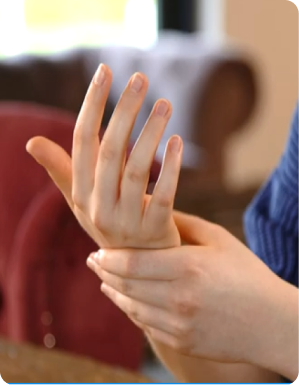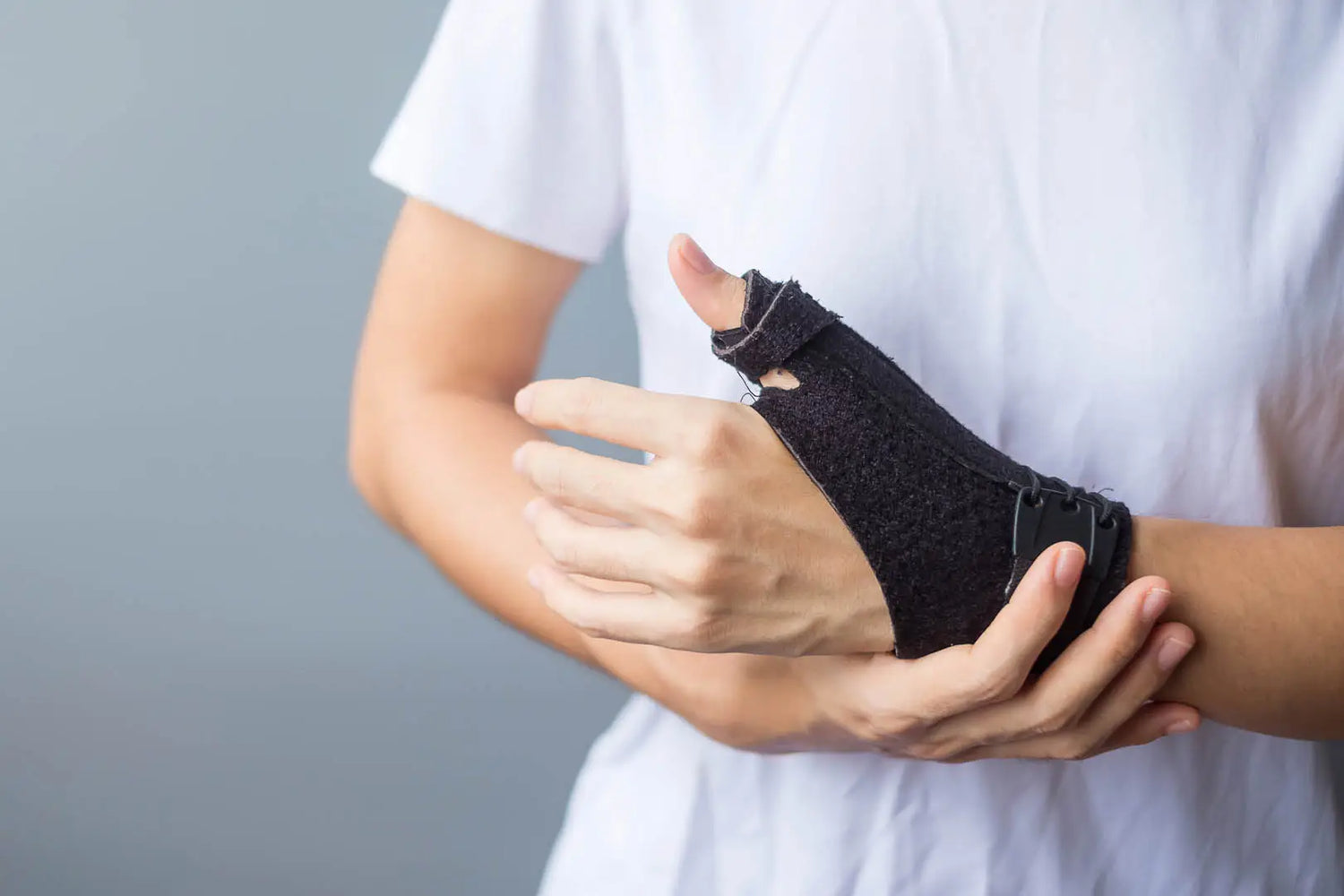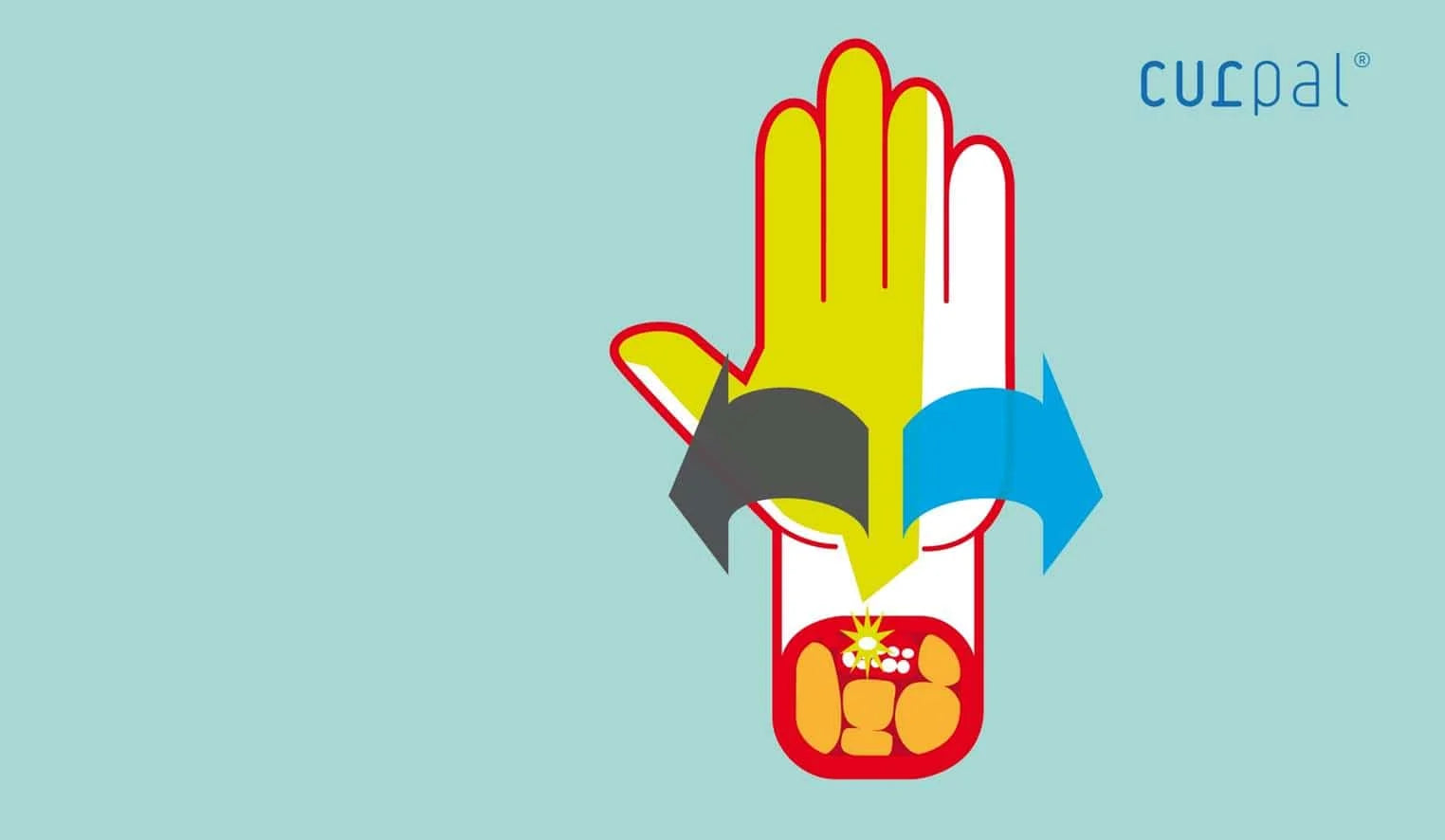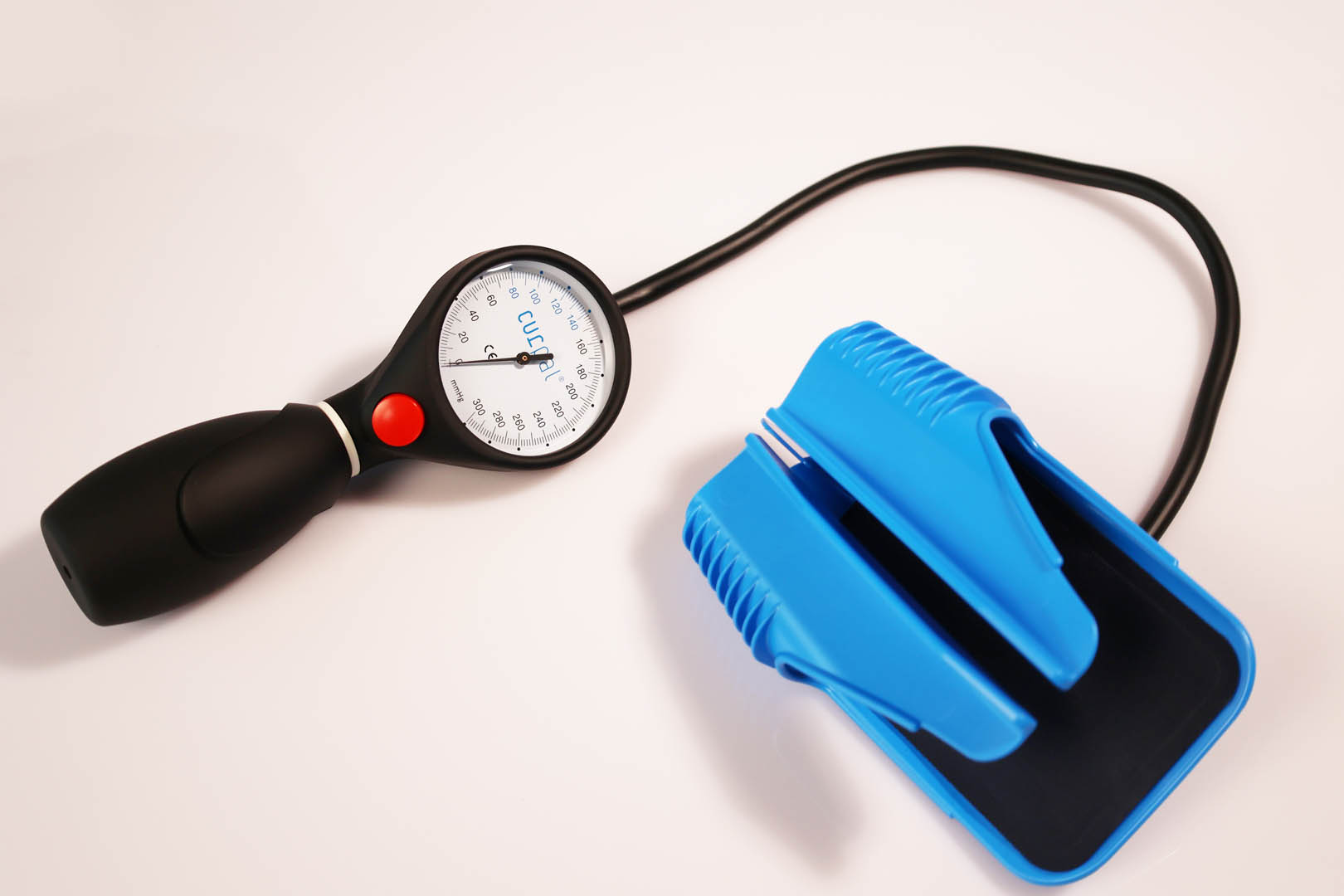Carpal tunnel syndrome (CTS) is a condition characterized by symptoms such as tingling, numbness and other unpleasant sensations in the wrist area. Those affected often complain of discomfort, particularly at night. The causes of carpal tunnel syndrome can be varied, from diabetes to advanced age.
Symptoms and causes of carpal tunnel syndrome

Typical symptoms of carpal tunnel syndrome are tingling and numbness, particularly in the thumb, index finger and middle finger. The pressure exerted on the median nerve in the carpal tunnel causes these symptoms. People with carpal tunnel syndrome are often affected by pressure on the flexor tendons of the median nerve.
Treatment of carpal tunnel syndrome

The treatment of carpal tunnel syndrome can be conservative or surgical, depending on the severity of the condition. Conservative methods include wearing a splint, stretching exercises and anti-inflammatory drugs to relieve symptoms.
Causes of carpal tunnel syndrome - the nerve is pinched

The causes of carpal tunnel syndrome are varied and can range from an advanced disease such as diabetes to excessive strain on the wrist. In advanced stages, surgery may be required to treat carpal tunnel syndrome.
Symptoms of carpal tunnel syndrome

Typical signs of carpal tunnel syndrome are tingling, numbness and pain in the wrist, often worse at night. These symptoms are caused by pressure on the median nerve in the carpal tunnel. The flexor tendons of the median nerve are often affected. You can find out whether you are affected here in a self-test.
How do you get rid of carpal tunnel syndrome?

Can carpal tunnel syndrome be alleviated?
Carpal tunnel syndrome can sometimes improve spontaneously, especially in mild cases. However, professional treatment is advisable to reduce the risk of complications.
Can carpal tunnel syndrome be cured without surgery?
The treatment options for carpal tunnel syndrome without surgery include conservative measures such as splints, physical therapy and anti-inflammatory medication. In some cases, these measures may be sufficient to alleviate the symptoms.
What should I not do if I have carpal tunnel syndrome?
To avoid aggravating the symptoms, sufferers should avoid activities that overload the wrist, such as repetitive movements or heavy pressure on the wrist. An ergonomic working environment can be helpful.
How does carpal tunnel syndrome get worse?

Carpal tunnel syndrome can be aggravated by prolonged strain, untreated inflammation or incorrect hand posture. Ignoring the symptoms and continuing to overload the wrist can lead to a worsening of the condition in the long term.
What can you do yourself for carpal tunnel?

What posture can help with carpal tunnel syndrome?
An ergonomic hand posture is important to alleviate the symptoms of carpal tunnel syndrome. Taking breaks during repetitive hand movements, regularly stretching the wrists and avoiding excessive pressure can help to reduce the symptoms.
Carpal tunnel syndrome
Carpal tunnel syndrome occurs when the median nerve in the carpal tunnel comes under pressure and causes symptoms such as tingling, numbness and pain. Common causes are diabetes, advanced age and excessive strain on the wrist.
Causes of carpal tunnel syndrome
Carpal tunnel syndrome can be caused by various factors such as diabetes, excessive wrist strain and advanced age. These lead to compression of the median nerve in the carpal tunnel, resulting in discomfort.
Symptoms of carpal tunnel syndrome
Typical signs of carpal tunnel syndrome are tingling, numbness and pain in the wrist, which are particularly noticeable at night. The pressure on the median nerve in the carpal tunnel causes these unpleasant sensations.
Treatment options

Treatment of carpal tunnel syndrome can be conservative, such as wearing a splint, stretching exercises and anti-inflammatory medication to relieve symptoms. In more severe cases, surgical treatment may be necessary.
Conservative treatment
Conservative measures such as splints, physical therapy and anti-inflammatory medication can help to alleviate the symptoms of carpal tunnel syndrome. These methods are often used as the first treatment option.
Tips and exercises for relief
Tips such as ergonomic hand posture, regular wrist stretching and taking breaks during repetitive hand movements can help reduce the discomfort of carpal tunnel syndrome. Physiotherapy can also provide effective support.
Treating carpal tunnel syndrome surgically
In advanced or severe cases, surgery may be required to treat carpal tunnel syndrome. The aim of surgery is to reduce the pressure on the median nerve and alleviate the symptoms.
The surgical treatment

Surgery for carpal tunnel syndrome involves exposing the median nerve or the carpal ligament by cutting the flexor retinaculum. This reduces the pressure on the nerve in the carpal tunnel, which can lead to relief from tingling and numbness. Most patients locate this on the carpal bone or the inside of the wrist.
The surgical procedure for carpal tunnel syndrome
The surgical procedure for carpal tunnel syndrome aims to reduce the pressure on the median nerve in the carpal tunnel. This is achieved by cutting the flexor retinaculum to relieve pressure on the median nerve and by stretching it.
All about treatment and surgery for carpal tunnel syndrome
What is carpal tunnel syndrome?
Explanation of the disease
Carpal tunnel syndrome is a condition in which the median nerve in the carpal tunnel of the wrist is compressed. This nerve is responsible for the sensitivity and motor function of certain areas of the hand. Various symptoms occur when the nerve is compressed.
Causes of carpal tunnel syndrome
The causes of carpal tunnel syndrome can be varied. Excessive strain on the wrist is often the cause, but diseases such as diabetes or anatomical narrowing of the carpal tunnel can also contribute to the syndrome.
Signs of carpal tunnel syndrome
Typical symptoms that indicate carpal tunnel syndrome are numbness, tingling or pain, particularly in the thumb, index and middle finger. Weakness in the hand can also occur. Everyday activities are impaired for weeks or months. In many cases, there is local anesthesia of the hand region. Carpal tunnel syndrome is caused by constriction of the median nerve. This is irritated and expresses its pain spontaneously at the beginning of the disease. There are various methods with advantages and disadvantages for treating carpal tunnel syndrome.
Exercises over several weeks are one method, as is open surgery. People between the ages of 40 and 70 are most commonly affected. The pressure on the median nerve and various areas of the hand, as well as tingling in the fingers, can be relieved in many cases by curpal.
The region of the ball of the thumb is often suspected to be affected by carpal tunnel syndrome. The risk of carpal tunnel syndrome is high due to the swelling and flexion. Many patients would like to alleviate this discomfort.
How does carpal tunnel syndrome manifest itself?
Typical symptoms
Carpal tunnel syndrome can cause typical symptoms such as pain, numbness and limited mobility of the wrist. These symptoms can increase as the syndrome progresses.
Sensory disturbances and tingling
Sensory disturbances, especially tingling, are common signs of carpal tunnel syndrome. These mainly occur at night or during strenuous activities.
Nocturnal complaints
Many people with carpal tunnel syndrome complain of nocturnal symptoms such as pain or numbness, which can interfere with sleep.
What treatment options are there?
Conservative treatment options
For conservative treatment of carpal tunnel syndrome, anti-inflammatory medication, wrist splints for immobilization or physiotherapeutic measures can be used.
curpal - patented medical device from Germany
As a new treatment method, curpal can help in most cases to bring about the desired stretching using a hand splint. The 3 x 3 x 3 method is used here. The carpal ligament can thus be relieved, which prevents discomfort or numbing of the nerves. The affected median nerve near the carpus is stretched mechanically.
Tips and exercises for relief
To alleviate the symptoms of carpal tunnel syndrome, special stretching exercises for the wrist and ergonomic adjustments at the workplace can be helpful.
Wrist splints as support
Wrist splints are often used to support and stabilize the wrist with carpal tunnel syndrome in order to avoid excessive strain.
When is surgery necessary?
Indications for surgery
Surgery for carpal tunnel syndrome is considered if conservative measures do not provide sufficient relief of symptoms or if the nerve compression is already advanced.
Procedure and execution of the operation
In the surgical treatment of carpal tunnel syndrome, the so-called retinaculum flexorum, a part of the carpal ligament, is cut to reduce the pressure on the median nerve.
Aftercare and recovery time
Aftercare following surgery for carpal tunnel syndrome includes regular check-ups by the attending physician and physiotherapy to restore hand function.
What are the risks and side effects of surgery?
Possible complications after the procedure
Although surgery for carpal tunnel syndrome is generally safe, complications such as infection, secondary bleeding or injury to surrounding structures can still occur.
Long-term effects on the wrist
Long-term effects of surgery can, in rare cases, be stiffness of the wrist or persistent pain that requires further treatment.
Recommended measures to avoid risks
To minimize the risk of complications after carpal tunnel syndrome surgery, careful medical care during the healing process and adherence to recommended behaviors are important.
How surgery can relieve tingling
Surgical release of the median nerve in the carpal tunnel reduces pressure, which helps to relieve tingling, numbness and pain. Surgery can be an effective solution to improve the symptoms of carpal tunnel syndrome.
After the operation: what to consider
After surgery for carpal tunnel syndrome, appropriate aftercare is important. Physiotherapy, resting the wrist and following the doctor's instructions are crucial for a successful recovery and long-term improvement in symptoms.







Leave a comment
This site is protected by hCaptcha and the hCaptcha Privacy Policy and Terms of Service apply.